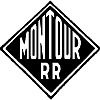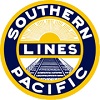PRR Centipede on its way!
Re: PRR Centipede on its way!
As these beases spent more time shoving than pulling it would be nice to get a single stripe freight version. With the possibility of mechanical breakdowns it would make for some interesting activities.
Duncan
Duncan
- dcushing
- Posts: 296
- Joined: Sat Nov 20, 2010 8:08 pm
Re: PRR Centipede on its way!
UP3985 wrote:This engine was listed among the US' biggest Diesel flops of all time! They were a maintenance man's nightmare!
It would be a mistake to conclude that these engines were unreliable. In general, Baldwin diesels were rugged machines, built around very reliable marine power plants, and put together very much in the tradition of steam locomotive construction. If you ever get your hands on Trains issues from the early-'60s, you'll run across articles about old Baldwins still being the preferred power for slow, heavy freight service, such as coal drags, to the extent that there was one coal hauler that was buying-up other railroads' castoffs into the early-'70s. The operating crews, in general, loved these units because of the repeated abuse they could take.
What made them a nightmare to the shop crews was that they were put together very much in the tradition of steam locomotive construction (my repetition here is deliberate), in that there was no standard plan for wiring the generator to the traction motors, nor for plumbing the air brake system, nor for for connecting just about any of the other components of the unit to each other: they simply went where the shift foreman decided they should go, much the same way as the steamfitting for the various appliances on a steam locomotive had been done for at least a couple of generations. The big difference - apart form the cost inefficiencies of building locomotives this way - was that it was much easier for the shop crews to read a mess of pipes on the outside of a boiler than it was to read a mess of cables and pipes snaking in and out of an underframe and around a carbody or a hood: a lot of expensive shop time was spent just trying to figure out where everything went before they could actually fix anything.
On the Class 1s, small groups of engines quickly became orphans as the green eyeshade types looked to cut costs by standardising things - this is where EMD's marketing to the railroads was brilliant, even if their product was somewhat inferior - and those railroads that had enough of them tended to concentrate them around a minimum number of shops equipped to deal with them, the Pennsy's practice being probably the best case in point.
UP cancelled their two demonstrators, which were supposed to have been the forerunners of a larger order (around two dozen, IIRC) for a variety of reasons, primarily being the Pennsy's bad experience with the turbochargers. The UP was probably the last stronghold of "big engine" thinking from the steam days, and indeed, they held onto it into the era of second generation diesels. Given their business model and traffic patterns, they had very good reason to do so. A unit that could lose 17% of it's power rating without notice was simply not reliable enough for perishables traffic, and there were more efficient, effective and reliable ways to put 10,000HP at the front of a train. The UP ended up doing it with gas turbines, and their shorter rigid wheelbases turned out to be much easier on the track at the speeds involved.
The Mexicans, OTOH, ran their Centipedes until fairly late in the game, and developed a different philosophy about locomotive maintenance and rebuilding. It was considered odd at the time it first came to the attention of fans up north, but a bit over half a decade later, their example became the basis of what is now an ongoing locomotive rebuilding industry, some of the products of which are every bit as creative as the early Mexican one-offs. A strong contender for the record of Baldwin longevity would be the NOPB, who were still running some of the earliest Baldwin switchers into the early '70s, at times switching loads and empties for NASA's Michoud plant, which was then heavily involved in the the Apollo program. There were other interesting survivors overseas, as well.
I agree that activities involving one or more unit failures would make for very interesting challenges. Such things became frequent into the '60s, particularly in EMDs with 567B engines, and to a lesser extent , the 567C. CGW, at that point, was putting eight to ten EMDs on the front of a train in the hope that three or four of them would still be running when the train got to the other end of the division. Other railroads were a bit less extreme - you might be hoping for two out of three, or maybe three out of five - but it was the nature of the beast until the early-'70s, when EMD's Dash 2s and GE's XR series U-Boats came along. One Penn Central story, told to me by a guy who heard it from an eyewitness, involved a slow freight with a mix of Alcos and EMDs on the front, including an FA with a blown turbocharger, pouring black smoke out of the carbody grills: two more units failed as it rolled through the junction and over the adjacent movable bridge, and the whole railroad (as well as the navigable waterway) was tied-up for the rest of the day. That one might be a bit extreme for a simulator, but handing a heavy freight with a dead unit would make for a real test of skill.
-

philmoberg - Posts: 425
- Joined: Fri Feb 20, 2009 8:50 pm
Re: PRR Centipede on its way!
Monongahela Railroad used their Baldwin Sharks up to the 70's pulling large strings of coal.
-

glenn68 - Posts: 967
- Joined: Mon Aug 09, 2010 1:21 pm
Re: PRR Centipede on its way!
This may be a case of crying before I'm even hurt, but RSC is now showing the Centipede in both the five stripe and Baldwin Dmonstrator Decors, with nary a sign of the single stripe helper version. Considering that this is how they actually spent most of there useful lives I hope it will be an easy repaint for someone.
Duncan
Duncan
- dcushing
- Posts: 296
- Joined: Sat Nov 20, 2010 8:08 pm
Re: PRR Centipede on its way!
I am ready for these! The PRR Centipede, was not so reliable, however, they were used for pusher service on the curve for years. They also were in passenger service, however, the multiple breakdown's incurred by the railroad regulated them to helper service on the grade, and it kept them near the shops...
R/
Galen
R/
Galen
-

gtw5812 - Posts: 1344
- Joined: Wed Sep 21, 2011 3:33 am
- Location: Millington, Michigan
Re: PRR Centipede on its way!
Saw on facebook that there is an animated waitor in the dining car!!!
These look fan-flippin-tastic!!!!





These look fan-flippin-tastic!!!!





--Galatians 2:20
- UP3985
- Posts: 319
- Joined: Tue Jun 26, 2012 6:16 pm
Re: PRR Centipede on its way!
BUT HAVE YOU SEEN THE PRICE??? 

-

johnmckenzie - Posts: 642
- Joined: Sat Mar 12, 2011 8:17 am
- Location: Lancashire, England
Re: PRR Centipede on its way!
Yikes, will pass on this one. Too much.
-

TDHenderson - Posts: 691
- Joined: Wed Jul 28, 2010 10:14 am
- Location: Omaha, Nebraska
Re: PRR Centipede on its way!
johnmckenzie wrote:BUT HAVE YOU SEEN THE PRICE???
Gimme a break!!!!

$28 for only three scenarios!!! Not even worth it for half-price.
I can't believe they call it PRR Black, clueless!!!!!
Harold
- hminky
- Posts: 417
- Joined: Wed May 06, 2009 11:50 am
Re: PRR Centipede on its way!
hminky wrote:
I can't believe they call it PRR Black, clueless!!!!!
Harold
Send RSC support an email.
"Just post some random unrelated text. We have members here who can help you with that." ~ Chacal
"When all else fails, read the instructions... if that doesn't work either, try following them." ~ Old Prof
The Grade Crossing - Atlanta North Project - Virtual Rail Creations
-

PapaXpress - Posts: 5147
- Joined: Sat Oct 23, 2010 10:30 pm
- Location: that "other" timezone
Re: PRR Centipede on its way!
Well first off, lets remember this is not RSC's creation! Also this addon comes with a brand new dining car, baggage car, and a claimed "Fully detailed engine start-up and realistic engine scripting". The screenshots looks very promising as well. While I would have liked for the demo livery that was shown on Facebook to be included I may get this then. With my work selling christmas trees I have the possiblity of making some really good tips that I usually use as extra "spending" money. We will see how much I get this weekend. 



-

ArcticCatZRT - Posts: 386
- Joined: Tue Feb 15, 2011 6:43 pm
- Location: Palm, PA
Re: PRR Centipede on its way!
Anthony Wood
Audio Engineer - Searchlight Simulations
Audio Engineer - Searchlight Simulations
-

BNSFdude - Posts: 2721
- Joined: Tue Nov 29, 2011 1:46 am
Re: PRR Centipede on its way!
Btw guys, its one of the best diesels I have driven.
"If you really needed a diesel locomotive right away, then go ahead and order a ALCO. But if you could wait for real quality, then go for an EMD or a GE".
My Youtube Channel (Railfanning and Train Simulator 2018)
http://www.youtube.com/user/3985gtasa
http://www.youtube.com/user/3985gtasa
-

bpetit - Posts: 1985
- Joined: Sun Sep 19, 2010 9:44 pm
- Location: New Orleans, Louisiana
Re: PRR Centipede on its way!
Man that makes it hard to hold back till I get my money situation straightened out...
-

ArcticCatZRT - Posts: 386
- Joined: Tue Feb 15, 2011 6:43 pm
- Location: Palm, PA
Re: PRR Centipede on its way!
OK, that video is impressive. 

-

TDHenderson - Posts: 691
- Joined: Wed Jul 28, 2010 10:14 am
- Location: Omaha, Nebraska
Who is online
Users browsing this forum: No registered users and 0 guests

